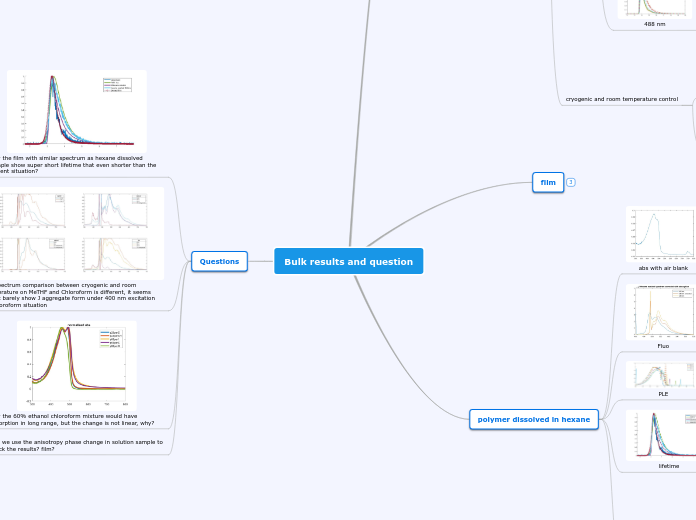Bulk results and question
solvent
Chloroform and Hexane
Chloroform and ethanol
ABS
not normalized
normalized
Fluo
400 nm
488 nm
lifetime
400 nm
488 nm
cryogenic and room temperature control
400 nm
488 nm
film
polymer dissolved in hexane
abs with air blank
Fluo
compare with other bad solvent
PLE
lifetime
Franck condon analysis
Hex 488 nm fit
Hex 400 nm fit
Questions
why the film with similar spectrum as hexane dissolved sample show super short lifetime that even shorter than the solvent situation?
similar to the lifetime trend in P3HT
It may from efficient(ultrafast) interchain exciton dissociation with eventual contribution of singlet-singlet annhilation.
Alternatively, aggergates could provide phonon modes capable of substantially increasing internal conversion, which cause the strong fluorescence quenching in film. (something as twistng motion of the molecular chain)
Ferreira, B., da Silva, P. F., Seixas de Melo, J. S., Pina, J., & Maçanita, A. (2012). Excited-state dynamics and self-organization of poly (3-hexylthiophene)(P3HT) in solution and thin films. The Journal of Physical Chemistry B, 116(8), 2347-2355.
the spectrum comparison between cryogenic and room temperature on MeTHF and Chloroform is different, it seems that it barely show J aggregate form under 400 nm excitation or chloroform situation
why the 60% ethanol chloroform mixture would have absorption in long range, but the change is not linear, why?
Can we use the anisotropy phase change in solution sample to check the results? film?
